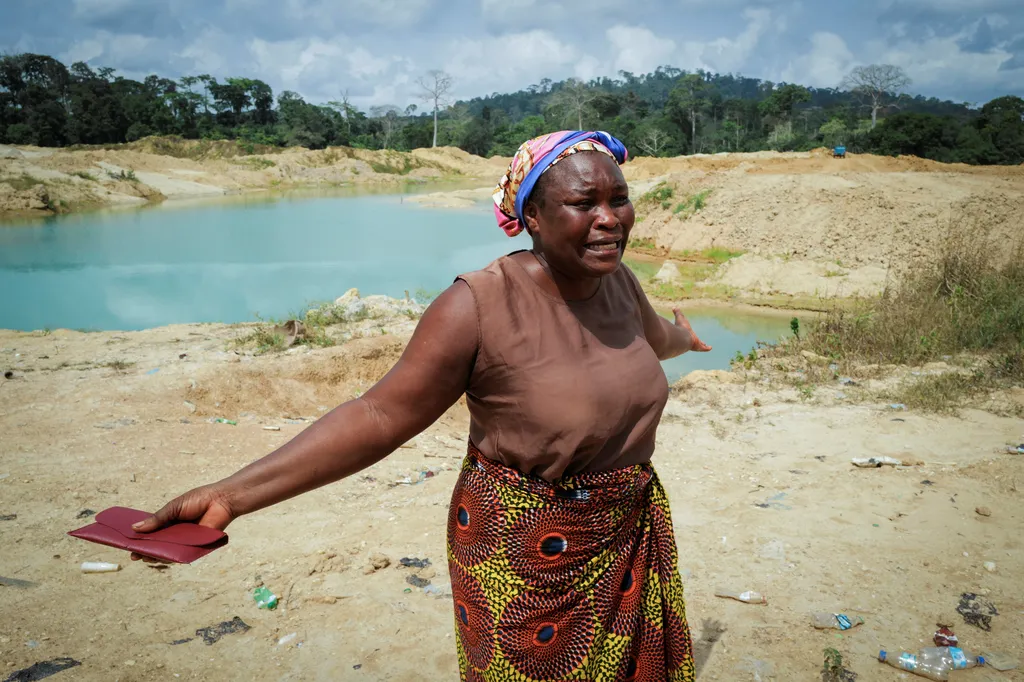In the lush tropical landscapes of Western Ghana, a delicate dance between soil fertility, trace metal uptake, and crop health is unfolding, with significant implications for the agriculture sector. A recent study published in *Frontiers in Soil Science* sheds light on how different land use systems interact with soil properties, offering insights that could reshape sustainable farming practices.
The research, led by Meryem El Mellouki of the Center of Excellence for Soil and Fertilizers Research in Africa at Mohammed VI Polytechnique in Morocco, examined four key crops: cacao, oil palm, cocoyam, and maize. These crops are cultivated on two soil types, Ferralsols and Acrisols, which are prevalent in the region. The study’s focus was on understanding how soil fertility influences the bioaccumulation of trace metals and the overall pollution load in these tropical soils.
Soil fertility, measured through the Soil Fertility Index (SFI), varied significantly across the different land use systems. Cacao grown on Acrisols showed the highest SFI, while maize on Ferralsols had the lowest. This variation in soil fertility directly impacts the uptake of trace metals by the crops. For instance, cacao on Ferralsols exhibited the highest uptake of manganese (Mn), copper (Cu), and strontium (Sr). “This indicates that high fertility does not necessarily equate to soil health,” noted El Mellouki, emphasizing the complexity of soil-plant interactions.
The study also assessed the contamination factors (CFs) and the Pollution Load Index (PLI) to evaluate overall soil contamination. The results were reassuring, with PLI values indicating that the soils were largely uncontaminated. However, the research highlighted that elevated metal uptake in certain systems, such as cacao on Ferralsols, warrants further investigation. “Trace metal accumulation is primarily governed by plant-specific ion selectivity and exclusion behaviors,” explained El Mellouki, pointing to the need for a deeper understanding of these mechanisms.
The commercial implications of this research are substantial. For farmers and agribusinesses, understanding how different crops interact with soil properties can lead to more informed decision-making. For example, knowing that cacao exhibits higher uptake of certain trace metals could guide soil management practices to ensure both crop health and food safety. Similarly, the findings on oil palm and maize can help optimize fertilization strategies, enhancing productivity and sustainability.
The study also underscores the importance of tailored approaches to soil management. “One size does not fit all when it comes to soil fertility and trace metal uptake,” El Mellouki remarked. This insight could drive the development of precision agriculture technologies, which are increasingly becoming a cornerstone of modern farming practices. By leveraging data-driven insights, farmers can tailor their practices to the specific needs of their crops and soil types, ultimately improving yields and reducing environmental impact.
Looking ahead, this research paves the way for further studies on the intricate relationships between soil fertility, trace metal uptake, and crop health. As the agriculture sector continues to evolve, the integration of such scientific findings into practical applications will be crucial. From optimizing soil management practices to developing new agricultural technologies, the insights gained from this study offer a promising path forward for sustainable and productive farming in tropical regions.
For those in the agriculture sector, the message is clear: understanding the nuances of soil-plant interactions is not just an academic exercise but a practical necessity. As El Mellouki and her team continue to unravel these complexities, the potential for transformative change in the field of agritech becomes ever more apparent.

